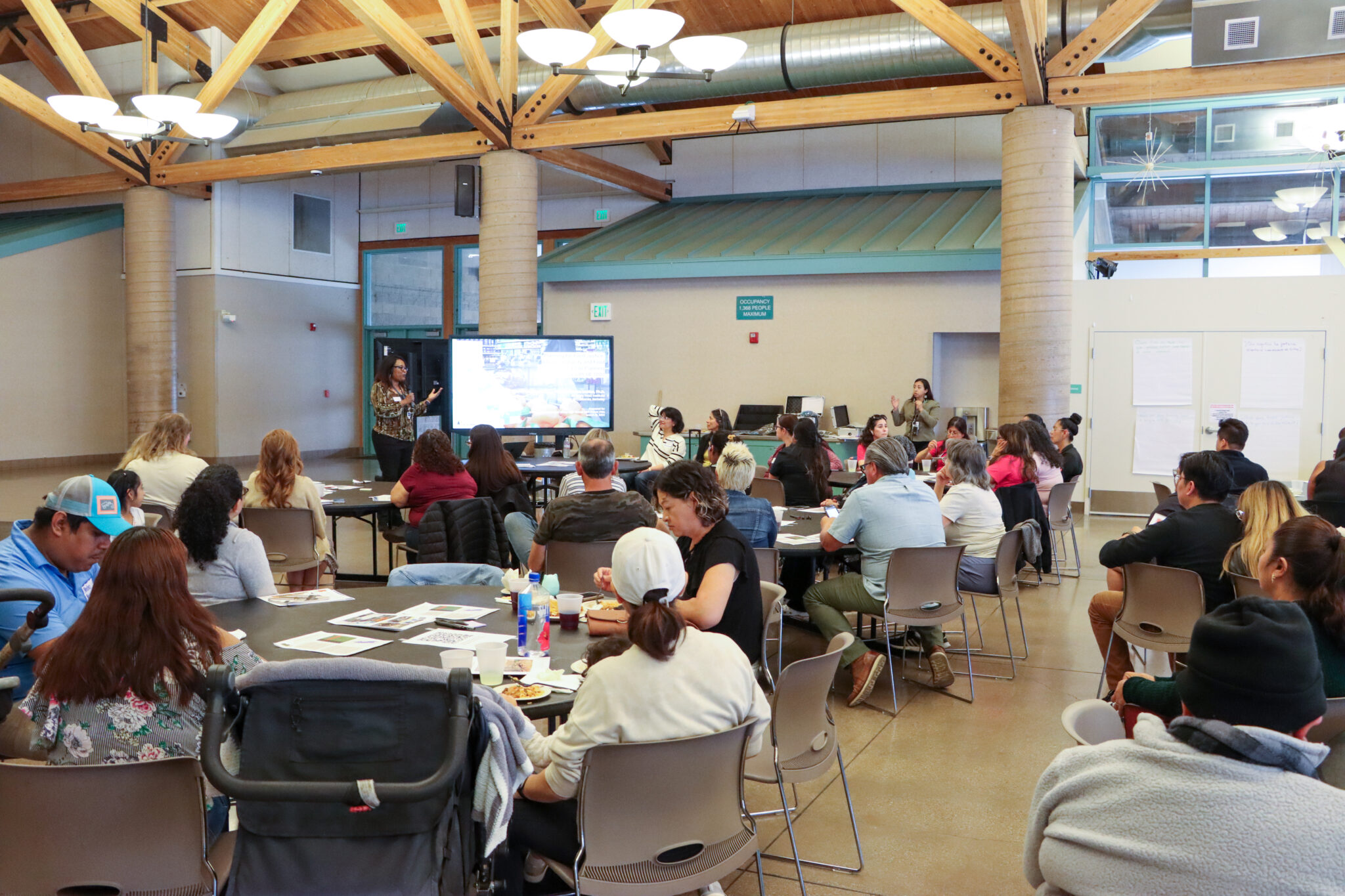From the Field
Advancing Food Justice with the Community of Gilroy
In an event co-organized by BFI and Nueva Vida, more than a hundred people gathered in the cafeteria at Gilroy High School to discuss how SB 1000 can be mobilized for food security and community health.

On a warm Thursday night, more than a hundred people met in the cafeteria of Gilroy High School. Don Julio’s Catering fired up the grill to make quesadillas and tacos. Children played in a designated toy zone. Families and friends held lively conversations across the round tables. The purpose of the gathering? To discuss how to advance food justice in their city.
On March 21, BFI teamed up with Gilroy based community organization Nueva Vida to host a community meeting with Gilroy residents to learn from the city’s implementation of Senate Bill 1000, a California law that incorporates environmental justice into city land use planning. BFI Faculty Director Charisma Acey presented her research on the state law, followed by fruitful breakout discussions.
The community meeting in Gilroy was the latest event in a research roadshow organized by BFI’s Community Engagement Program Manager Nathalie A. Muñoz. Last fall, Acey presented on SB 1000 at UC Center Sacramento. The BFI team also hosted a community meeting with residents in Richmond, California.

BFI Faculty Director Charisma Acey presents on Senate Bill 1000 and how this law can be mobilized to advance food justice through city land use planning. Photos by Austin Price
Senate Bill 1000: The Planning for Healthy Communities Act is a state law passed in 2016 that requires cities and counties with “disadvantaged communities” to incorporate environmental justice into their General Plans. City and county planning offices can either update their General Plan with a standalone Environmental Justice (EJ) element or incorporate environmental justice goals throughout the plan.
The authors of SB 1000 had many goals in mind, from reducing pollution exposure to promoting community engagement with the city policymaking process. BFI faculty directors Charisma Acey and Susana Matias focused on one particular goal: food justice. In 2022, they launched a research project evaluating SB 1000 implementation throughout the state and how well it advances equity-based food access policies. Last fall, BFI published a research report with their preliminary findings, along with a database of General Plans compiled by UC Berkeley graduate student Katherine Fallon.
In Gilroy, Acey presented on these preliminary findings and recommendations, while also assessing Gilroy’s approach to the state law. “Disadvantaged communities” that trigger SB 1000 are identified by the California Environmental Protection Agency through its CalEnviroScreen tool, which uses various health and environmental indices to rank census tracts. In Gilroy, CalEnviroScreen identified two census tracts as “disadvantaged.” The City of Gilroy then combined these tracts into an area it calls the Equity and Engagement District. With help from a consulting group, Gilroy was one of the first cities in California to adopt an EJ element after SB 1000 went into effect.

Gilroy residents discuss food justice and community action in the context of SB 1000 and city land use planning.

BFI Co-Associate Faculty Director Susana Matias facilitates a discussion with Gilroy residents.

More than a hundred people attended the event to learn about SB 1000.

BFI published its SB 1000 Research Report in both English and Spanish in preparation for the community meeting.
During the planning process, Nueva Vida led outreach efforts to the city’s Latinx residents to gather their insight. That outreach work continued with this community meeting: Thanks to Nueva Vida, more than a hundred people attended. Many of them expressed that they had never heard of SB 1000 before — illustrating the need to bridge the gap between communities and the land use planning process.
In preparation for this event, we translated the SB 1000 report into Spanish and produced a handout in both English and Spanish on Gilroy’s approach to SB 1000, including the goals listed out in the city’s EJ element. UC Agriculture and Natural Resources helped translate the SB 1000 report. Linguistica Interpreting and Translation provided translation services during the community meeting.
Thank you to Nueva Vida for the help rallying the community of Gilroy to learn about SB 1000. As Acey and Matias found in their research, community awareness of SB 1000 is necessary if the policies listed in city General Plans will ever be implemented. Updating a General Plan with an EJ element is just the beginning of the process of advancing food justice through a combination of land use planning and grassroots mobilization.